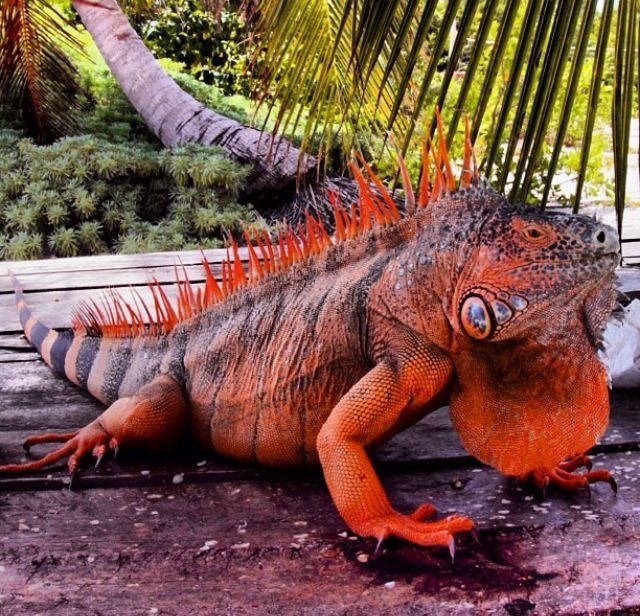Red iguanas are a stunning species of lizard that captivate reptile enthusiasts and nature lovers alike. Their vibrant hues and unique characteristics make them a fascinating subject of study and admiration. Found primarily in the lush forests and jungles of Central and South America, these reptiles are known for their striking coloration, which can range from bright red to orange, depending on their habitat and breeding. As they bask in the sun or climb among the branches, red iguanas showcase their beauty and resilience, making them a popular choice for pet owners and wildlife photographers.
In recent years, the popularity of red iguanas has surged, leading to increased interest in their care, habitat, and behavior. For those considering adding a red iguana to their home or simply wanting to learn more about this remarkable species, understanding their needs and natural history is essential. Through this article, we will explore the various aspects of red iguanas, including their habitat, diet, and social behavior, while also addressing some common questions and concerns surrounding these captivating creatures.
As we delve into the world of red iguanas, we will also highlight the importance of conservation efforts aimed at protecting their natural habitats. With habitat loss and environmental changes posing threats to their survival, it is crucial for us to appreciate and advocate for the well-being of these incredible reptiles. Join us on this journey to uncover the wonders of red iguanas and learn how we can contribute to their preservation.
What Makes Red Iguanas Unique?
Red iguanas, scientifically known as Iguana iguana, are a subspecies of the green iguana, and their distinctive coloration sets them apart from their more common relatives. Here are a few unique traits that define these striking reptiles:
- Coloration: Their vivid red and orange hues can change depending on their mood, health, and environmental conditions.
- Size: Adult red iguanas can grow up to 6 feet long, making them one of the larger species of iguanas.
- Diet: Primarily herbivorous, red iguanas thrive on a diet of leafy greens, fruits, and vegetables.
- Behavior: Red iguanas are known for their calm demeanor, which makes them suitable pets for experienced reptile keepers.
Where Do Red Iguanas Live?
Red iguanas are native to the tropical rainforests of Central and South America. Their preferred habitats include:
- Forests: They thrive in dense, humid forests where they can easily camouflage among the foliage.
- Riversides: Red iguanas are often found near rivers and streams, providing them with access to water and diverse vegetation.
- Urban Areas: In some regions, these lizards have adapted to urban environments, often seen basking in gardens and parks.
What Do Red Iguanas Eat?
In the wild, red iguanas are primarily herbivores, feeding on a variety of plant materials. A balanced diet is crucial for their health and well-being. Here are some common dietary components:
- Leafy Greens: Collard greens, dandelion greens, and kale are excellent choices.
- Fruits: Mango, papaya, and berries can be offered in moderation as treats.
- Vegetables: Squash, bell peppers, and carrots provide essential nutrients.
How to Care for Red Iguanas as Pets?
For those considering red iguanas as pets, proper care and housing are essential. Here are some tips to ensure a healthy and happy iguana:
- Enclosure: A spacious enclosure with vertical space for climbing is vital. A size of at least 6 feet long, 3 feet wide, and 4 feet tall is recommended.
- Heating and Lighting: Provide a basking spot with a temperature of 95°F and a cooler area around 75°F. UVB lighting is crucial for their health.
- Humidity: Maintain a humidity level of 60-70% to keep their skin hydrated and prevent shedding issues.
- Diet: Offer a varied diet rich in greens, fruits, and vegetables to promote good health.
Are Red Iguanas Social Creatures?
Red iguanas can exhibit social behaviors, especially when raised in captivity. However, it is important to note:
- Territoriality: They can be territorial, especially males, and may display aggressive behavior towards other males.
- Handling: Regular handling from a young age helps them become accustomed to human interaction.
- Companionship: While they can tolerate the presence of other iguanas, it is usually best to house them separately to prevent stress and aggression.
What Are the Common Health Issues in Red Iguanas?
Like all reptiles, red iguanas are susceptible to various health issues, including:
- Metabolic Bone Disease: Caused by a lack of calcium and UVB exposure.
- Respiratory Infections: Often a result of improper temperature and humidity levels.
- Parasites: Internal and external parasites can affect their health, requiring veterinary attention.
How Can We Protect Red Iguanas and Their Habitats?
Conservation efforts are crucial for the survival of red iguanas and their ecosystems. Here are some ways to contribute:
- Support Conservation Organizations: Donate or volunteer with organizations dedicated to reptile conservation.
- Promote Awareness: Educate others about the importance of preserving their habitats and the threats they face.
- Responsible Pet Ownership: If you own a red iguana, ensure you provide proper care and avoid contributing to the illegal pet trade.
Conclusion: Embracing the Beauty of Red Iguanas
Red iguanas are not just stunning creatures; they are a vital part of our planet's biodiversity. By understanding their needs and advocating for their conservation, we can ensure that future generations can admire these magnificent reptiles in the wild and in our homes. Whether you are a reptile enthusiast or simply someone who appreciates the beauty of nature, red iguanas offer a glimpse into the wonders of the animal kingdom.
You Might Also Like
Exploring The Enchantment Of Rhysand FanartCody Raheem Rhodes: The Rise Of A Wrestling Icon
Awakening Desire: The Art Of Good Morning Sex
Unveiling The Mystery Of Lydia Violet Leak
Unleashing The Power Of Anime Defenders Script
Article Recommendations


